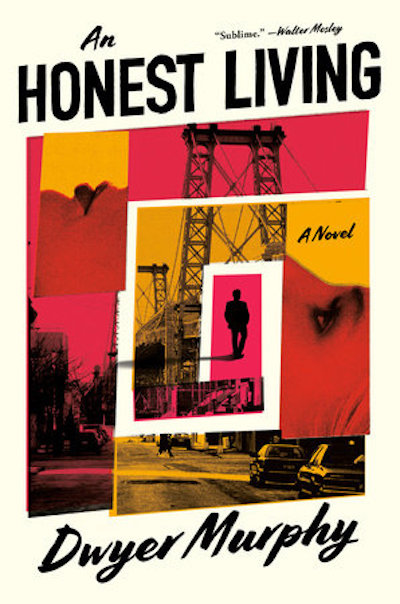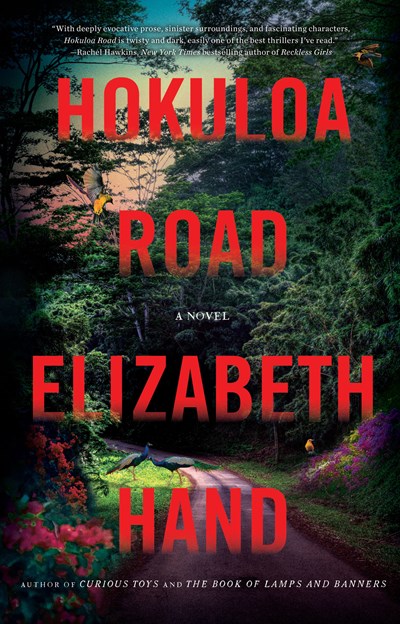In real life, artist Georgia O’Keeffe began in 1929 to spend part of each year at Ghost Ranch in Abiquiú, New Mexico, and eventually moved there. When we join her at the ranch in 1934, she’s settled into an artistic rhythm in the desert landscape that so inspired her. O’Keeffe regularly drives into the desert to paint, enjoying a life that’s much looser than she lived with her rich, philandering husband back in New York. (In an amusing scene, the beat-of-her-own-drum-living O’Keeffe must genuinely have explained to her what a speed limit is.) On one of her excursions, the artist finds the vulture-attacked body of a priest, and the mystery only deepens when the man’s luggage contains decidedly unholy objects; it also has a map of the area with O’Keeffe’s house marked. As she investigates the strange man’s death, outsiders who visit Ghost Ranch, including Charles Lindbergh and his wife, Anne, add to the puzzles facing O’Keeffe. Neighbors’ lives, with their own difficulties, also feature prominently in the artist’s day-to-day life, with Lasky unobtrusively showing the twistedness of the Native’s subjugation. For example, white visitors who have spent their lives in this country have unfamiliar Native myths explained to them by reference to more familiar Greek myths and must be told not to take notes at a Native ceremony because “we are not museum artifacts.” While it’s apt for the time, the n-word features twice, and child sexual abuse is also a theme. Readers who enjoy this intriguing, emotional series debut could try another featuring celebrities: Erin Lindsey’s A Golden Grave, in which Nikola Tesla is a character; or for more New Mexico-set mysteries with a female sleuth, pick up Amanda Allen’s Santa Fe Revival series.
Mystery & Detective
Lovers of classic mysteries will be familiar with the locked-room trope, in which a finite set of characters is stuck in one place with a murderer in their midst, à la Murder on the Orient Express. Here the “room” is the real northern Irish town of Inishowen, which is cut off from the outside world when a month’s worth of rain falls in 24 hours, with all roads and bridges leading out of town destroyed by floods. The townspeople come together well enough, including the protagonist, solicitor Benedicta (Ben) O”Keefe. When readers last met Ben,, in Murder at Greysbridge, she was heading off to New York for six months, partially to get a break from her confused relationship with a local police sergeant (he hasn’t gone anywhere and the fate of the on-again, off-again relationship is an enjoyable subplot). She returns to find her hometown awash but her small law firm ticking along nicely, even if her replacement didn’t know how to leave any surface paper-free. Not moving along so well is a charity cycling event that’s supposed to run from nearby Malin Head, Ireland’s most northerly point, to Mizen Head, it’s most southerly, with weather keeping the cyclists restlessly bound to Inishowen. Then the rain brings a more macabre result: on a late night call, the local vet’s car is hit by a falling body. Ben once again gives her Sergeant beau a run for his money in the investigation stakes, uncovering family secrets, local scandals, and contentment with her Inishowen lot along the way. Lovers of grittier cozies are the audience for this one.
Take a trip back to early 2000s Brooklyn in this work of literary noir that lurks on the edges of the art world. Noir novels present an investigator who’s down on his or her luck, and here it’s Dwyer Murphy—yes, the main character has the same name as the author—a former corporate lawyer who couldn’t take the hours, the billing in six-minute increments, or the colleagues. Now he’s going it alone, but he needs the odd lucrative job (even the odd shady one) to stay afloat. He takes a sad case: one party in an acrimonious divorce wants him to try to buy books off her husband; she suspects that he’s selling some of her valuable, inherited volumes and needs the proof. Two things are strange: the “books” are esoteric, early American legal pamphlets such as “Confessions of Tom Mansfield who Corrupted and Murdered His Servant,” which Dwyer had no idea were collectibles, let alone worth taking risks over. And then he faces being sued by the wife because he’s ruining her husband’s reputation. There’s no end to the rich-people twistedness here, which is both incredible and all-too believable. That’s enjoyable enough, but best is the slow-burn, quirky trip with the steadfast Dwyer, who puts one foot in front of the other until he figures out what’s going on. A kinda, sorta Thelma-and-Louise ending caps the saga, but leaves room to wonder what’s next for the lovable Dwyer.
Everyone’s battling extremes in Mo’s latest Sweden-set psychological thriller-slash-police procedural. Thomas Ahlström loves his toddler son, Hugo, but has a daughter he abandoned when she was the boy’s age. That daughter, Lykke, starves herself for days on end just to have something she can control, but tenderly cares for the shadow lilies growing her in garden. Detective Hanna Duncker, back in her second installment in the series (after The Night Singer), is as determined a cop as they come but is sick of the job’s endless “death, lies, and families.” More of that is on the cards, though, when she and her partner must investigate the disappearance of Thomas and Hugo. Suspects and secrets abound, as do red herrings, and readers will be rapt as one by one, the innocent—of this crime, anyway—drop away and Hanna and Erik face danger over and over to get to the heart of a violent puzzle. At the same time, Hanna is tantalized by possible new details on an old killing; her father was convicted, but now a contact in that case wants to talk. We end on a cliffhanger—bring on #3!
Maddy Montgomery is in need of a major reset. Spoiled rotten—Daddy’s an admiral—the recent Stanford grad and social-media-marketing maven loves her Laboutins and Jimmy Choos, as well as her doctor fiancé . Until he abandons her at the altar. And the ceremony was being livestreamed. Time for #FreshStarts #NoLookingBack. As luck would have it, Maddy has just inherited her great-aunt Octavia’s estate in New Bison, Michigan, a quaint town on Lake Michigan. The catch? She needs to live in the town, run her aunt’s bakery, and care for Babe, a 250-pound English mastiff—I defy any reader not to fall in love with him—for one year. Octavia was one smart, independent woman, and it seems like she also knew that Maddy needed a reset. Maddy’s willing—does she really have a choice?—and before you can say Hicksville, she’s making new friends, learning to crack open an egg, and even dating. Until the much-maligned Mayor gets killed, and Maddy’s fingerprints are found on the murder weapon. Help comes from the Baker Street Irregulars, a group of her great-aunt’s friends, who help her navigate the treacherous waters of Great Bison and present a different set of values, values that Maddy finds herself adopting. A great start to a series that is part poignant, part humorous, and part suspenseful while introducing a wonderful, new, African American heroine.
Deeply heartfelt and gently humorous, Kalmann is as unique as its eponymous hero, Kalmann Odinsson. Self-proclaimed mayor of Raufarhöfn, a small town in Iceland’s far north, early thirty-ish Kalmann is also the town’s one remaining shark catcher and producer of hákarl, a delicacy made from fermented shark. But Kalmman’s mind works differently from most people’s. You could call him neurodivergent, but he just says that “things with me have never really gone forward.” Then one day, when hunting a fox outside of town, he comes across a large pool of blood in the snow. This leaves him completely rattled, but instead of reporting it to the police, he goes home and watches Dr. Phil. Kalmann is called in for questioning the next day; it seems that a local businessman has disappeared. While Kalmann remains sort of focused on solving the murder—while putting forth the theory that a polar bear could be the culprit—Schmidt takes us deep into Kalmann’s life, from his mixed experiences growing up to all he learned about survival from his wonderful grandfather, and from his bouts of loneliness to the challenges he has communicating with others, and vice versa. Still, the criminal element remains the rope that pulls us through the book. Schmidt’s creation of the character Kalmann is no less than masterful. Can we hope that this is just our first foray with Kalmann?
When a member of the Kappa Phi Omicron fraternity is killed when crossing an Athens, GA street, it at first seems like an unfortunate accident. Homicide Detective Marlitt Kaplan is first on the scene because she happens to be nearby, but it turns out that her murder-investigation skills might be needed after all, because witnesses all mention the same odd set of facts. The victim, Jay Kemp, appears to have been run over by…Jay Kemp. Although he didn’t have a twin, a person who looked exactly like him was driving the car that ran him over, and that person was smiling as he gathered speed while moving toward Jay. The victim’s fraternity is the first place Kaplan and her partner hit when gathering facts about Jay, and from the start, things don’t look right. Is the boys’ secretiveness just fraternity culture or a coverup? Nothing is clear, and it’s made even murkier by the intertwining of grudges and dramas with former fraternity members, current members who are on the outs, and the many, many girls in the wings. A slowly unfolding backstory concerning what Marlitt endured when her old friend joined a different fraternity adds to the mystery. This intriguing debut is one for fans of academia gone wrong, such as depicted in the TV series The Chair.
The aftermath of the pandemic combines with desperation and greed in the second in Klingborg’s series, a thriller set in northern China and Myanmar. It stars Inspector Lu Fei, whom we meet while he and his colleagues—idiots every one, if we’re to believe Lu—stalk a man who’s suspected of selling endangered-animal parts that are popular as folk remedies. The government has cracked down hard on live-animal (or “wet”) markets since COVID-19 made them the focus of the world’s attention, and it’s Lu’s duty to make the rigid bureaucracy felt on the ground. Back at the station, a thin, scared girl, Tan Meirong, won’t leave until someone pays attention to the disappearance of her sister, Meixiang, who works in a restaurant that Lu learns has “off-menu” items for rich diners. It’s hard for even Lu to get someone to care about Meixiang, who’s regarded as rather disposable, but he persists, going undercover to the source of the forbidden delicacies. Lu Fei is a character to ponder. He’s mean to his girlfriend and even Meirong, but he won’t let Meixiang go. But mostly readers will be caught up in the exciting international chase that sees Lu hitting the road with little regard for his safety and armed with little except a strong desire to trample odious characters. James Patterson fans, this one’s for you!
Grady Kendall has lived his whole life in Maine. An out-of-work carpenter—we’re in the third month of the pandemic—28-year-old Grady is living with his mother, with his one sibling in jail and his girlfriend long gone. So when the opportunity comes along to work as a caretaker in Hawaiʻi for billionaire Wes Minton, Grady jumps at the chance. But as beautiful as Hawaiʻi might be, there’s an unsettling undertow. With tourism on hold, more people are without homes, sleeping rough on the beach. Drugs, opiates especially, are everywhere. A shocking number of people are missing, their names memorialized on a wall. And Hokuloa Road, a remote part of the island, is said to be dangerous—for many reasons. When Grady learns that Jessie, a young woman he met on the flight to the island, is among the missing, he makes it his job to find her. Eventually this takes him even deeper into the wilderness, facing fears both man-made and mythological. This is a strong, unsettling narrative that manages to stay centered on Grady while he roams in search of the truth. Clear writing, a brisk pace, and a growing sense of dread make for an excellent work of crime fiction.
Jay and Cindy have quite a history. Back in the ‘90s they were husband and wife, soap-opera stars, and a successful musical duo. Then Cindy came out as gay, and Jay quickly followed, sinking their entertainment careers as fast as you can say “don’t ask, don’t tell.” Today the two are still buddies, share a home in Palm Springs, and have recently launched Hooray for Hollywood, a movie memorabilia store—think Betty Davis’s director’s chair from the set of What Ever Happened to Baby Jane? But business is slow and money is tight, so when ninety-year-old Yana Davis, an actress from Hollywood’s golden age, approaches them to sell her vast collection of costumes and other items, they’re ecstatic. Hooray for Hollywood indeed, until they discover that they’re competing against Dylan Redman, VP at a Sotheby’s-like firm with enormous resources. This book is an absolute delight. Yes, there’s plenty of humor, and Yana is pure camp. But at the book’s core are Jay and Cindy, both struggling with loss and loneliness, both trying to make a success out of what they love. There’s plenty here to attract a broad range of cozy readers, all of whom will be back for book two.










